Enamel hypoplasia is a developmental defect where the enamel, the outermost layer of the tooth, is underdeveloped or thin. This condition can affect both baby (primary) and permanent teeth.
Causes of Enamel Hypoplasia
- Nutritional deficiencies: Lack of essential vitamins like calcium and vitamin D during tooth development.
- Infections during pregnancy or early childhood: High fevers or certain viral infections can disrupt enamel formation.
- Trauma or injury: Physical trauma to the teeth, especially during development.
- Genetic conditions: Conditions like amelogenesis imperfecta can lead to enamel hypoplasia.
- Environmental factors: Exposure to toxins like lead or certain medications during tooth development.
Visible signs:
1. Pitting or grooves on the tooth surface.
2. Discoloration, with teeth appearing yellow, brown, or white.
3. Thin enamel, which may make the teeth more prone to decay and sensitivity.
4. Irregular tooth shapes or textures, with affected teeth sometimes looking rough or uneven.
Treatment Options
Treatment for enamel hypoplasia depends on the severity of the condition:
- Fluoride treatments to strengthen enamel.
- Dental bonding or sealants to protect the affected areas.
- Crowns or veneers for cosmetic and functional restoration if the enamel is severely compromised.
- Good oral hygiene to prevent further complications like cavities.

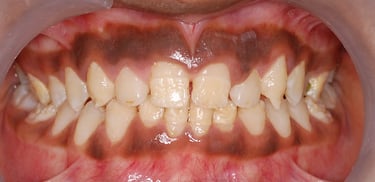
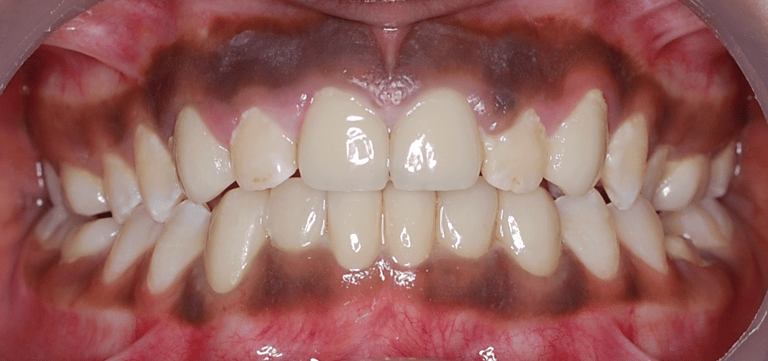

Enamel Hypoplasia
Regular dental checkups are crucial for managing and preventing further damage caused by enamel hypoplasia.
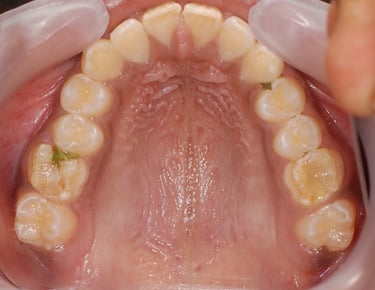

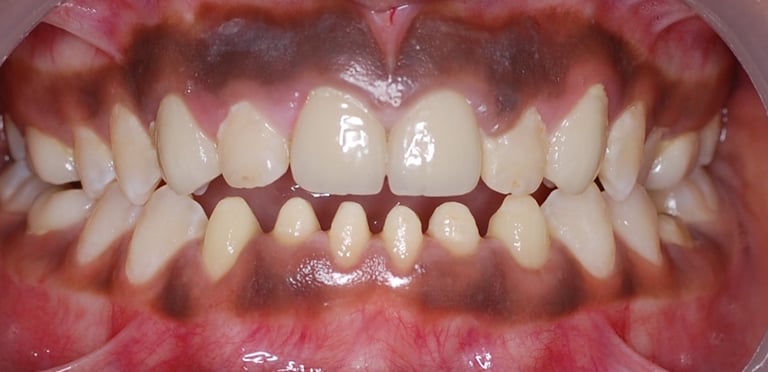

Clinical picture above & below showing pitting and grooves on teeth enamel surface of permanent teeth
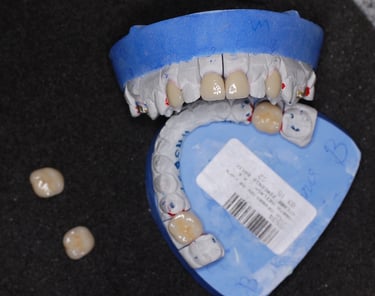

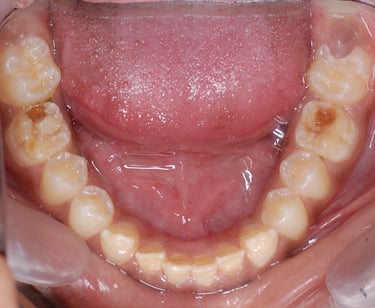

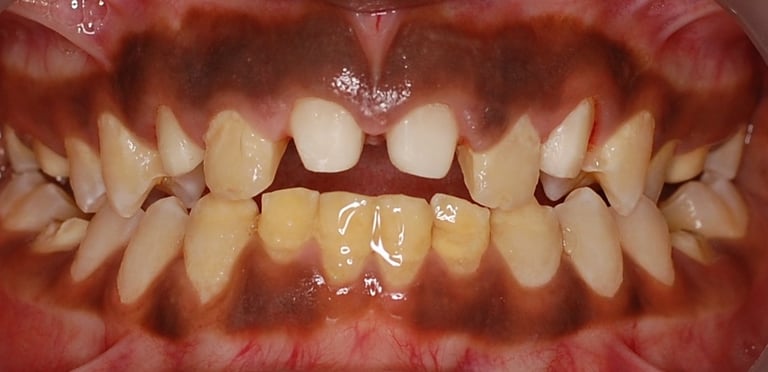

Management with Zirconia full crowns on few upper & lower teeth, restoring function and esthetics
esmile.in
esmile.in
esmile.in
esmile.in
esmile.in
esmile.in
esmile.in
Mouth Preparation required for full crowns
Full crowns on dental casts before fixing




